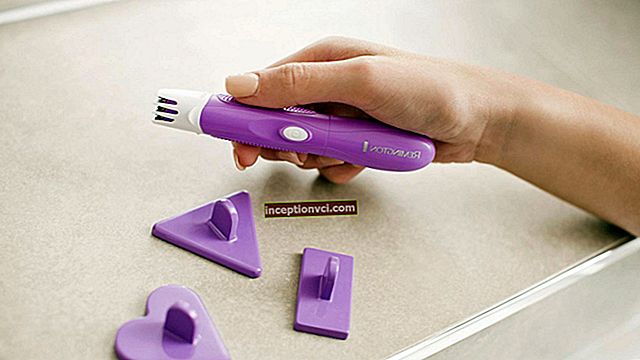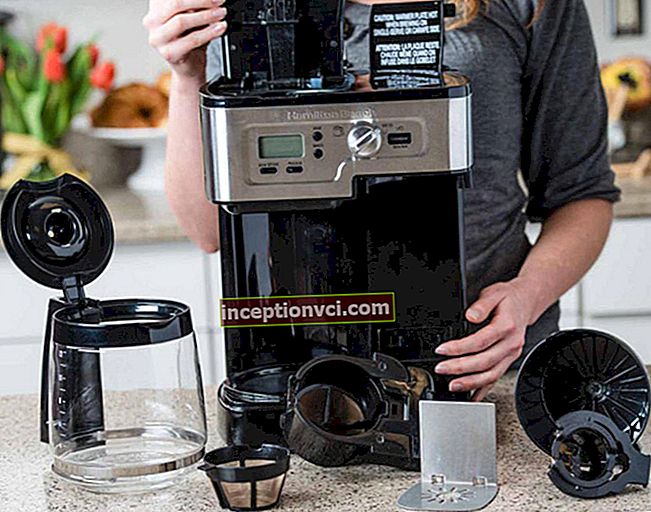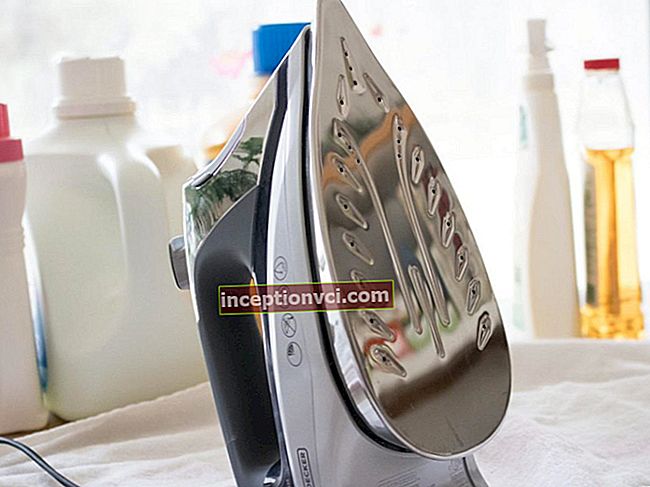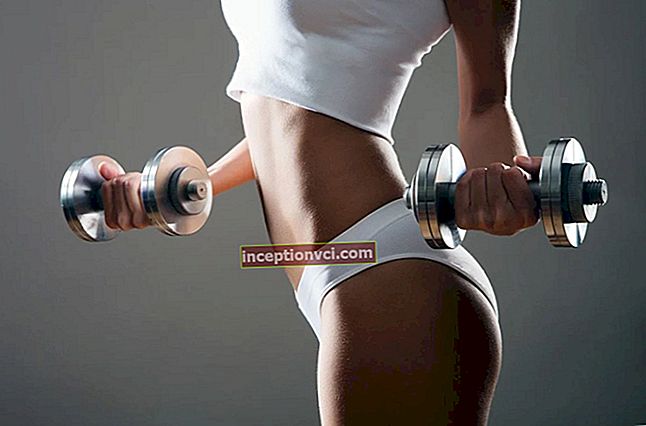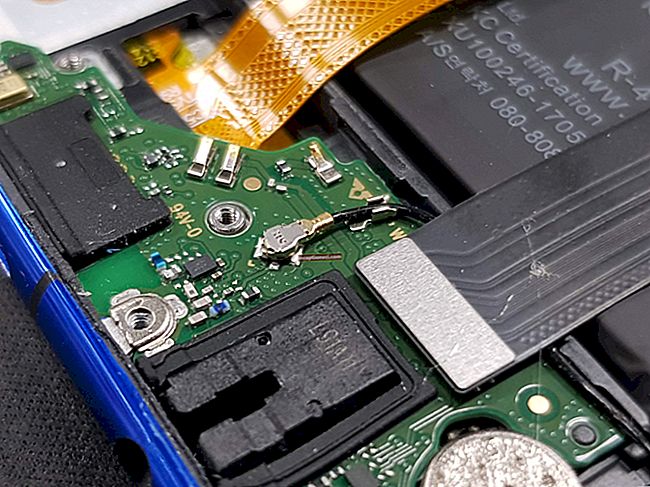INTRODUCTION
Sony NEX-3 and Sony NEX-5 non-reflex cameras with interchangeable lenses use a large APS-C format with a resolution of 14 megapixels, a rotating high-resolution display of 920 thousand pixels, can shoot video in HD format (MP4 720p in the case of the NEX-3 or AVCHD 1080i in case of NEX-5). Shooting modes and camera capabilities include scene programs, PASM exposure modes, intelligent automatic (i-AUTO), RAW, HDR, automatic stitching of panoramas (one swipe). The interface is designed for novice photographers, a large system of shooting tips and hints is integrated.
CHARACTERISTICS
The matrix | 14.2 megapixels; resolution - 4592x30566 pixels; format - APS-C (physical size 23.4x15.6 mm) |
Optics | Sony-E line. In the tests we used Sony E 18-55 / F3.5-5.6 OSS. Minolta, Sony Alpha and Konica Minolta lenses via special adapter, no autofocus. |
Memory card | SD / SDXC / SDHC or MS Duo / Pro-HG Duo / Pro Duo format media. |
Display | 920 thousand pixels, 3 inches |
File format | Photo - RAW, JPEG, RAW plus JPEG; video - AVCHD resolution up to 1920 x 1080 pixels at 60/50 (17 Mb / s), or MP4 up to 1440 x 1080 pixels at 30/25 (12 Mb / s), with stereo sound |
Interfaces | Shared USB / AV, mini-HDMI, remote control |
dimensions | 111x59x38 mm (according to the manufacturer, case without protruding places) 114x61x100 mm (my measurements, dimensions with optics 18-55 / 3.5-5.6) 114x61x68 mm (my measurements, dimensions with optics 16 / 2.8) |
Position in the model range | After the NEX-3 model (link to my review for this unit) |
The basic principle of non-mirrored cameras is the use of a large “SLR” matrix and interchangeable optics, which provide image quality unattainable for compact cameras, while the design is simplified (compared to DSLRs) - it allows to reduce the overall dimensions of the devices. This class of digital cameras came out quite recently and so far seems rather unusual, new, although the pioneers of non-mirror movement, Panasonic and Olympus, have already released a couple of models, and recently Sony and Samsung have joined the cohort of pioneers.
After a close acquaintance with the Sony NEX-5, I got the feeling that these 4 companies approach the development of non-mirrors in different ways, besides, it is Sony's position that differs the most.
Olympus, has long been one of the largest manufacturers of photographic equipment, and this number also includes Samsung and Panasonic, which do not have such a rich photographic film past, but, nevertheless, in the development of non-SLR cameras they follow the same path - they connect the classic developments in the field of development photographic equipment with today's electronic technology. At the same time, Sony, a forerunner in the electronics market, goes from the other side - developing electronic devices that can take pictures. This is clearly noticeable in the design of the NEX, and in minimizing the number of "iron" controls while simultaneously displaying their functions on a virtual plane, and in ergonomics, and in the performance of an external flash, and in the unusual "smart accessory connector" that replaced the traditional "hot shoe" ...
The name of the NEX models alone, is similar in sound to the English word Next (next) and intersects with the expressions "Generation Net", "Generation Next", which are not only used in professional demography as separate terms to denote a generation born in the nineties of the twentieth century , but also became frequently used and widely known in society.
For convenience, in the review, I will call the camera "NEX-5", but almost all of the above can also be attributed to the younger model NEX-3. The difference between these models lies in the video recording format (NEX-3 does not support shooting in Full-HD format, shooting is carried out in MP4, 1280x720 pixels, 9 Mb / s), as well as in design solutions (the body of the NEX-5 is made of magnesium alloy, it is slightly more compact, while the NEX-3 has a 0.5cm smaller grip).
DESIGN AND CONSTRUCTION
Developer Sony has made amazing strides in miniaturization.The case of the NEX-5 looks like an ordinary compact, the thickness at the narrowest point is only 24 mm - especially if you remember that the APS-C matrix is used, as in DSLRs (besides, not only the entry-level, but also in serious models ). Until recently, no one would have believed that this was possible. To achieve this, the developer had to sacrifice a sensor-shift optical image stabilization system - which is not available on the NEX-5, so the lenses are responsible for stabilization.

Sony NEX-5 turns out to be a record-breaking compact set with a prime lens - "pancake" with a focal length of 24 equivalent mm. In this case, the overall thickness of the device with the lens does not exceed 68 mm, and the NEX-5 is actually the smallest camera with a large format APS-C matrix.
At the same time, it should be admitted that from the point of view of practice, zoom lenses will be much more in demand (especially among amateur photographers - the target audience of Sony NEX) - the classic "whale" 18-55 / 3.5-5.6, it was he who was on my test (depicted in the following illustration).

With him, the situation changes a little. The minimum thickness of the camera (in the transport state, with the cover on and the lens retracted) is already 10 cm. It is this size that must be taken into account when choosing a camera bag or trying to put it in your pocket. The manufacturer's record 38 mm case thickness is, of course, impressive, but it makes little practical sense - this is about how to indicate the weight of the device without batteries (which is widely used), does it make sense? After all, no one will use the device without a battery.

In the illustration above, it is good that the 18-55 lens increases not only the thickness, but also the height of the device, protruding beyond the body.
Despite the overall dimensions of the lens being 18-55, compared to the NEX-5 body, the camera can only be held with the right hand - the handle is rather convex and has a comfortable shape. If you connect your left hand (and this is a must if you need to make any settings and intercept the camera), then you already want to take the camera not with two fingers at the extreme corners, as when holding a compact, but put your palm under the lens, your thumb is directed to the left - as is done with SLR cameras. The metal lens barrel fits nicely into the hand, 2 perforated rings are easy to rotate. The wide ring is for zooming, the narrow one for manual focusing.
The record-small size of the NEX-5 is especially striking when you consider the fact that the display is rotatable. This function is now rarely implemented in devices of this size - the dimensions are significantly increased. And the developer Sony was able to do it, honor and praise to them.

The display rises approximately 80 degrees and lowers 45 degrees. It rotates only in one plane - or rather, structurally axis 2, but in a geometric sense it is one. There is no left-right rotation, but this is a minor drawback, because in practice they are needed incomparably less often.

However, the full name of the Sony Alpha NEX line contains the word Alpha, the new mount is incompatible with the lenses of the Alpha DSLR line. A bayonet, Sony E, has been developed for NEX devices. Minolta, Alpha and Konica Minolta lenses can be supplied thanks to a special adapter LA-EA1, but focusing will be manual only.
At the moment, the Sony E line consists of only 3 lenses. In addition to the already mentioned 16 / 2.8 and 18-55 / 3.5-5.6 prime lenses, the developer announced the 18-200 / F3.5-6.3 OSS universal zoom lens. Speaking of the active launch of the Sony Alpha DSLR on the market, one can hope that the Sony NEX (or Sony E) non-mirror system will quickly acquire new products.

The NEX-5 does not have a built-in flash, but an external one is included as standard. Actually, this approach is justified - the built-in flashes in compact devices are still of little use, shots with a flash "head-on" are often unacceptable. It is better then to turn off the flash altogether, moreover, in the case of the NEX-5, the large sensor allows increasing the sensitivity to sufficiently high ISO sensitivities without significantly lowering the quality.
An external flash connects to the connector on the top panel (the user manual calls it “smart accessory connector”) and is secured with a screw. Not very convenient, but quite bearable. The flash does not contain its own batteries (in this sense, it is not entirely "external"), but is powered by the device's battery, which speeds up its already rather fast discharge.

Other accessories such as a microphone for video recording or an optical viewfinder FDA-SV1 can be installed in the same connector. By the way, stereo sound is recorded quite well with the built-in microphones, but the quality should be much better when using an external microphone.
The only trouble is (or at least a limitation) that you won't be able to use different accessories at the same time, because there is only one interface. Or a flash, or a viewfinder.

CONTROL
On the top panel there is a rotary power switch for the camera. It is a little unexpected that the manufacturer used just such a solution, and not the usual button recessed into the body - after all, the switch protrudes above the body, upward, increasing the overall dimensions of the camera and thereby contradicts the concept of miniature. Although it is undoubtedly more convenient to use it. Nearby there is a play / view button, as well as a key with a red dot in the center of MOVIE (in fact, it is located at the junction of the rear and upper planes - the beveled edge of the case) - it activates and deactivates video recording, there is no need to turn on video mode. The display is large and, moreover, stretched horizontally. As a result, there is little room for the controls on the rear panel. There are four of them - 3 buttons and a perforated ring, or a disc, as it is convenient for anyone. With such a limited number of controls in the arsenal, the developer did not use the touch screen, as it might seem, but went a different way. The contextual principle has been implemented - the functions of the keys are not constant, but change all the time depending on the active shooting mode. On the right side of the screen, in the free area of the frame, labels are displayed indicating the current functions of the buttons. The keys have a kind of dual nature - they seem to be iron, but at the same time they are virtual. Since the keys do not have rigid designations (as evidenced by the absence of icons on the panel), I will call them "Top", "Bottom" and "Center". The navipad ring can not only rotate, which is used when changing parameters and moving through the menu, but also pressed in 4 directions. The functions of these directions, or navipad buttons, are strictly fixed. The Up key, marked with the word DISP, is used to switch the option of displaying information on the display. In shooting mode, there are only three options (screenshots are presented a little below). The presence or absence of the histogram is determined not by the DISP button, but in a separate menu item. The display of all camera settings is passive, in other words, their values cannot be changed directly on the screen, you need to dive into the menu (except for those three that are controlled by the buttons on the navipad - about them a little later). It turns out that the camera does not have a full-fledged on-screen menu, or some similar system for quick access to parameters and their change. Everything is done through the menu. The third option for displaying information on the screen is with exposure parameters scales (they are not displayed in Panorama and Intelligent Auto modes). The bottom key, in most cases, offers to use the built-in help system, hints and tips for shooting. There are a lot of similar tips in the database, 18 pages. At the same time, they are sorted by shooting modes and themes (Portraits, Night views, etc.), and in addition, when you press the key, tips are displayed that are specific to the active mode. Although, you can read the entire built-in manual by accessing through the menu. Interesting opportunity, who would argue. And yet I wish the Bottom Button programming was implemented. I draw your attention to the fact that the battery charge level is displayed on the monitor directly as a percentage. Very convenient, isn't it? However, as they say, "Many knowledge - many sorrows"; I am clearly convinced that the camera consumes battery power very rapidly. The purchase of an additional spare battery (at least one) seems to me to be absolutely necessary. Navigation button Left allows you to switch the operating mode of the shutter release. In addition to the usual time-lapse shooting, there are 2 options for continuous shooting (it is also continuous), a self-timer (delay is only 10 seconds, after which the camera takes one, three or five shots; there is no delay of 2 seconds, which is inconvenient if shooting from a tripod when the timer is used to eliminate camera bounce), exposure bracketing (3 shots with a 0.7 or 0.3 EV bracket) and remote control. The camera's performance is beyond praise. Time-lapse shooting can be done faster than 1 frame per second (not an achievement for DSLRs, but much faster than most compacts). Standard continuous shooting is carried out at a speed of 2.5 frames / second, but there is also a high-speed option - 7 frames / second, and at the maximum frame resolution. Autofocus is pretty fast. I had an 18-55 lens on my test - with it in the carbon position, the NEX-5 shows the autofocus speed of a good DSLR. In telephoto position, the speed is reduced by one and a half times, but it still surpasses the performance of compact cameras. Navigation button Right allows you to switch the flash mode. However, for this, the device requires you to first install the flash - well, let's install it. There are 2 options available in the smart machine mode - Automatic or Off. In the mode of scene programs - in different ways. For example, in Portrait - the same set as in the smart machine, and in Landscape - Off, Auto and Fill. In PASM modes, the list of external flash modes is much more serious - Slow sync (including rear-curtain sync), Fill. There is no automatic option - since I put the flash on, and even activated the advanced modes, then decide for yourself whether to use it or not. To turn off the flash, it must be tilted forward, as if brought into a "folded" state, as in SLR cameras. The bottom navipad button is used to enter exposure compensation. The correction can be entered either by turning the dial or using the Up-Down buttons. Unfortunately, in this case, the histogram disappears from the monitor - and this is its main purpose - to provide accurate entry of exposure compensation. In addition, exposure compensation does not work in the i-AUTO mode - also a shame, especially given the camera's tendency to overexpose. The top key on the back panel is most often used to dive into the menu. In addition to a few functions directly controlled by the buttons on the navipad, all other switching and settings are performed just through the menu. The graphical interface of the menu (or rather, its root, top, level) is always unchanged. The menu is divided into 6 sections. When you dive into the menu, the last used section is highlighted - it is he who opens by default. CAPTURE MODES: PASM, I-AUTO, VIDEO, SCN The virtual disk, thanks to which you can switch the shooting mode, is displayed on the screen either when you dive into the menu, or, in most modes, immediately after pressing the Central key. On the "disk" there are 8 positions - the classic list of PASM exposure modes (which can be called advanced), 2 fully automatic modes - intelligent automatic and SCN scene programs, Panoramic shooting and "Anti-motion blur". An intelligent automatic machine is obviously designed for novice users - or those who simply do not want to be introduced into the settings of the device, preferring to shoot with a full automatic. In this mode, the unit analyzes the shooting conditions and selects one of the following scenes: Night portrait, Night view, Night view plus tripod, Backlight, Portrait, Portrait / backlight, Macro or Landscape. The icon of the recognized mode appears in the upper left corner (in the above illustration it is Macro). In the smart machine mode, the ability to enter exposure compensation is lost, the set of parameters available through the menu is reduced to a minimum (I draw your attention to the fact that the BB changed from the incandescent lamp preset used in the screenshots in the early section to the only possible option Auto-WB - as a result of this, the color rendition turned out to be wrong). A little surprisingly, the only open control is the diaphragm. The control is organized by pressing the Central button, and the function is called "Blur the background". When you enable Background Blur, an arc is displayed on the right side of the screen, along which you can move the orange marker by turning the dial - from the most open aperture position (“Blurred”) to the closest (“Sharp”). In tele-position, the lower region of the arc becomes inaccessible, gray - in accordance with the decrease in the maximum possible opening of the diaphragm. It seems that everything is convenient and simple - a great tip for novice amateur photographers. But in reality, everything is completely different, and following the prompts, you can easily get the result completely opposite to what was intended. If you want to get a sharper background, then move the orange marker up, the aperture is closed, as a result of which the depth of field increases, and the background is sharper. But all this is only in theory. In practice, several factors will influence at once. First, the picture will be washed out due to the diffraction of light rays on a tiny hole (and along the edges of this arc, trying to get the background as "sharp" as possible, the beginner will reach the aperture value of F / 29, or maybe even F / 32). Secondly, closing the aperture will lead to a decrease in exposure, which the automation tries to compensate for (except when shooting a brightly lit scene) or a slower shutter speed (which increases the risk of blurring the image), or an increase in ISO sensitivity (this will increase the noise level). Combined with these 3 factors, I doubt that this will produce the sharp image the hobbyist hoped for. In fact, there is some optimum, after which it is not necessary to cover the diaphragm - but nothing is reported from the proposed interface. At the other end of the range, the situation is also uncertain. If you have the goal of blurring the background, then the diagram on the monitor gives the erroneous impression that the best option is to choose the wide-angle position and set the aperture value at F / 3.5. Indeed, according to the picture, it turns out that with increasing focal length, the possibility of "blurring" decreases (a gray area of inaccessibility appears and increases). Similar dubious advice on this matter is provided by the built-in Guide, in order to achieve background blur, it is recommended to "move closer to the object". In practice, however, as you get closer to the subject, you have to use wider-angle positions, and the background will not turn out to be blurry; more or less strong background blur will turn out exactly in the opposite case - if you move away from the subject and use the telephoto zoom position. The intelligent auto mode, on the virtual disk, is followed by the classic PASM exponent list. In the programmed mode, the camera independently sets the exposure values (aperture and shutter speed). The corresponding values are displayed in numerical format on the screen.The ISO sensitivity (for ISO Auto) determined by the camera's automatic is not displayed. There are no program shift functions in the same mode (the ability to synchronously change the value of 2 exposure parameters with a constant exposure). In Aperture Priority (aka mode A), the aperture value is set manually, and the camera's automation determines the shutter speed. Shutter Priority (Mode S) is the opposite. Finally, in manual exposure mode, both shutter speed and aperture are manually set. Switching between them is carried out with the exposure compensation key. The camera also displays a hint - the difference between the exposure obtained as a result of manual settings and the most optimal value from the point of view of the camera's automation. Under the SCN position of the virtual disk, 8 scene programs are hidden: Night portrait, Sunset, Sports, Macro, Landscape, Portrait, Night view and Twilight from hand. The plots are strictly prohibitive, in other words, it is impossible to change most of the shooting parameters (ISO, white balance, metering type, etc.). You cannot enter exposure compensation either. If we talk about Macro mode, it will not be superfluous to say that compared to compact cameras, the lens does not optically adapt to focusing at very close distances. To get true macro shots, as with DSLRs, you need to use special lenses (which are not available in the Sony E line, let's hope this is temporary). Also note that the 18-55 / 3.5-5.6 lens has a unique feature - as the zoom increases, the minimum focusing distance does not increase in it, it remains almost unchanged throughout the entire zoom range, and is approximately 15 centimeters (from the front lens of the lens to the object shooting). And yet, this does not result in a significant increase. The "Hand-held Twilight" plot stands out especially among the plot programs - that's why I decided that we would consider it in a separate section, along with Reducing blur and Panoramic shooting. Sony NEX-5 can record videos in AVCHD format (resolution - 1920x1080i), or in MP4 format (resolution 1440x1080i / VGA). I also note that there are no other options - for example, there is no resolution of 1280x720 pixels - the maximum for the younger NEX-3 camera. During video shooting, there is no way to change the aperture (as a result, you cannot control the depth of field), as well as the ISO sensitivity. But "on the fly" you can enter exposure compensation - just like when taking a photo, by pressing the Down navigation button. The picture quality for video recording is quite acceptable. Autofocus works - however, the camera tends to refocus from a close subject to the background, and not vice versa. In such cases, you can help her by pressing the shutter button (not fully), but this may be accompanied by AF yaw, which will be noticeable when watching the video. Manual focus also works (when the MF mode is selected in the menu), it allows you to make beautiful focus transitions from one plan to another. As I already said, the device does not use Super SteadyShot optical stabilization based on sensor shift, it was replaced by Optical SteadyShot, based on lens shift in the lens. When recording video, it does not have the proper stabilizing effect on the image - at least I was not able to identify it. You need to hold the camera carefully, or even better, install it on a tripod - if you don't do this, the image will turn out jerky.

































